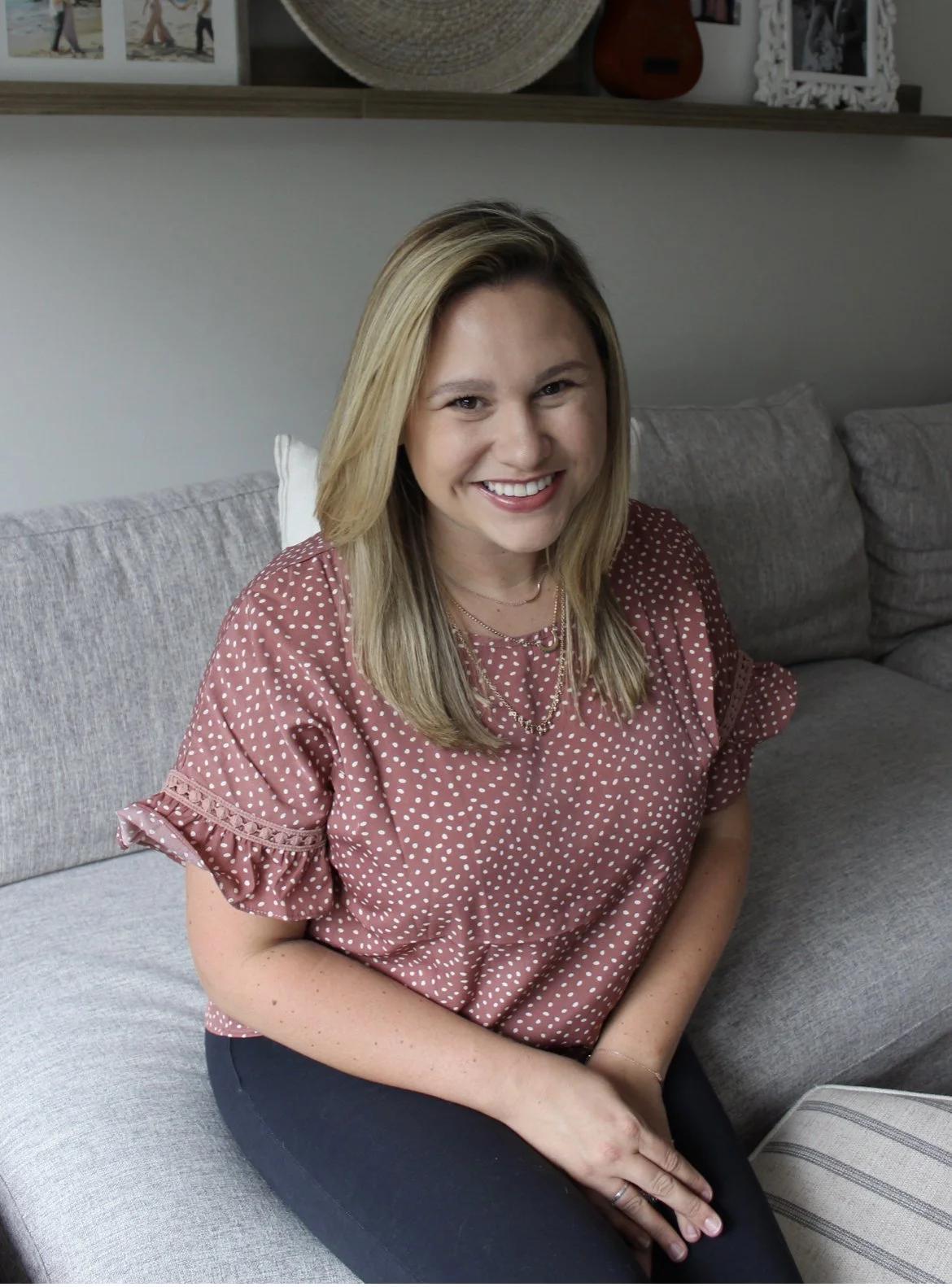Did you know that research shows that parent carry-over of speech & language therapy strategies is correlated to positive progress towards goals? It’s true! As a pediatric SLP, I understand that my time with your child is limited. As the parent or caregiver, you spend the most time with your Little One outside of our quick 30- or 60-minutes per week! Being equipped with strategies to work into your day-to-day is a big part of your child’s success in therapy. Here are my top 10 tips to support your child’s language skills at home WITHOUT feeling like you (or they,) are “doing work”.
Top 10 Tips to Support Speech & Language Development At Home
from a pediatric Speech-Language Pathologist
Model, Model, Model! Talking to your child throughout the day and focusing on repeating FUNCTIONAL words (like the names of objects, family names & action words) is a huge help to your Little One. As you’re playing, talk about what you have & what you’re doing. “Ball! Bounce ball! Bounce, bounce, bounce.” “Blocks! Blocks go UP! Up, Up, Up! Uh Oh! Down!” Having trouble thinking of words to model on the fly? Grab a copy of our POWER WORDS printable to keep on hand!
Take Advantage of Routines: There are certain things we do every single day. Think: diaper changes, getting dressed, meal time, brushing teeth, bath time, etc! Take advantage of these times to repeat the same words or phrases each time. The repetition helps your child know what’s coming next and encourages them to jump in and give it a try! Here are some of my favorite song-gesture routines to incorporate language!
PAUSE: Get comfy with pauses! When you’re doing a routine, be sure to PAUSE before the word you are focusing on to give your child a chance to fill it in! Let’s think of a hand washing routine, where we are wanting to focus on “hands” - “This is the way we wash our….pause…HANDS! wash our hands, wash our hands. This is the way we wash our…pause….HANDS! Wash our…pause…. HANDS!” REMEMBER: it’s best to practice these routines WITHOUT expectation. If your child doesn’t jump in to fill in - that’s okay! Keep it going & model naturally. More on this here!
Use Their Interests: If your child wants to explore something other than toys - like string, boxes, tupperware, etc… go with it! Modeling language for your child when they are most excited & engaged will result in better language learning opportunities. Get some inspiration from our post on this here!
Incorporate Visuals & Gestures: Consider printing out pictures of your child’s favorite foods or drinks, or cutting labels off of the boxes they come in to show visual choices. When you’re talking about items in the room that are far away, add in a gesture (e.g., pointing,) to direct their attention to the object you’re discussing! Using gestures is also a great way to support direction following. More on this in our post here!
Focus on Play, Not Work: Play is the work of children. Research has shown that when a new It’s how they explore & learn about the world! I encourage you to ditch the structured learning, like flash cards, for children 0-3 years old when working on early language. (Check out our post on why here! and here!)
Get messy!: If your little one loves to get into everything they shouldn’t… use that! Bubbles, mud (or edible versions!) sand or kinetic sand, water are great tools to get your child's interest & engagement up. Model words like “yuck!” “oh no!” “splash!” “wet!” “dry!” “bubbles!” “pop!” to hit those functional language targets while having a blast! Here’s a favorite easy car wash activity of mine!
Avoid saying, “Say ___”: While it may feel counter-intuitive, it’s actually most helpful to our Littles when we model words that match their experiences, rather than asking them to repeat after us. There’s a few reasons for this - 1. repeating sounds is a different skill than being able to understand & use words independently 2. it can create performance anxiety, and work against your goal of your child saying the word 3. it can lead to a power struggle - if your child refuses, the interaction is now done, and many natural language opportunities gone along with it! More thoughts on this here.
Focus on GIVING THE ANSWERS instead of ASKING THE QUESTIONS: if your Little One is still working on using words consistently, they may not be ready to answer wh- questions just yet. Changing your mindset to giving them the answers to the questions you WOULD have asked can help 1. increase the amount of specific models you expose your child to 2. decrease the performance anxiety/frustration of not being able to answer just yet 3. allows for more natural interactions, full of language learning. More thoughts on this here!
Give yourself some grace: As parents, we innately shoulder any feelings of guilt or responsibility when it comes to our Little Ones. “Did I do enough?” “Should we have started sooner?” are all things that have gone through many parents’ minds during the process of therapy. I’m here to tell you - toss those thoughts. You are the best parent for your child. Interacting, playing & responding to your child are the best things you can do to help support their development. In case no one has told you lately, you’re doing a wonderful job.
If this was helpful, be sure to follow our Pinterest Account for more at-home speech-language supports, easy at-home activities & product recommendations!
Jackie
Jackie Anderson, MS CCC-SLP
Jackie is a pediatric speech-language pathologist & owner of Ascend Pediatric Therapies in New Jersey.


